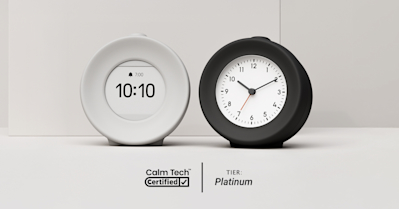
How hybrid work boosts health and well-being
The shift to hybrid working is having a significant impact on employees’ mental health and overall well-being. These benefits include reducing stress levels, in addition to freeing up time for family, friends and, very-importantly, self-care.
Undoubtedly, the global pandemic has changed the way we work in significant ways. As countries lift or modify restrictions, there’s a unique opportunity to create workplaces that put the health and well-being of employees at the forefront.
As we assess the long-term effects of the coronavirus, our view of the way we work and interact with one another is also changing. Various degrees of lockdowns have driven home the benefits of working from home. These benefits are felt by not only employees, but employers are also seeing the upside. In many of these cases, neither workers nor businesses are likely to give them up any time soon.
According to a survey by the UK’s Office for National Statistics, an overwhelming percentage of working adults (a whopping 85%) who worked remotely during the last two years, would now like to split their time between working from home and coming into the office. Additionally, a workplace assessment by IWG (International Working Group) reveals that currently, many employees place a high premium on having the flexibility to work from home or in the office. In fact, a staggering 72% of the participants responded that they would forgo a 10% pay rise in favor of retaining hybrid working. [1][2]
The hybrid approach to working allows workers to split their time between home and the office. It has already been adopted by many multinational corporations such as SalesForce, Adobe, and Standard Chartered bank. Other companies, such as Twitter, Upwork, and Quora have moved towards the remote-first option.
For employers, there are many advantages to a hybrid work model, such as reduced office expenses, in addition to improved recruitment and retention. It’s no surprise that the hybrid approach to office work appeals to many diverse industries.
However, hybrid work also provides many benefits for employees. In addition to the autonomy and flexibility, the hybrid option also offers a potential to boost their health, well-being and even productivity.
Increased flexibility and independence
One of the main benefits of hybrid working, particularly for the individuals known as ‘knowledge workers’, is the increased flexibility and independence.
Allowing team members to have the freedom to work from different locations, whether from home, an office or a local co-working space can actually benefit your mental health because it empowers them to balance their schedule. Take control of their time, and use it in a way to increase productivity. As a result, this translates into more job satisfaction and less burnout.
For managers and business owners, this flexibility gives them the opportunity to learn how not to micromanage their employees. A vital part of the hybrid work model is building trust between teams and the individuals who manage them. Having confidence that your department can get their work done on time is key.
In fact, over the years, many studies have shown that trusting employees pays off in the long-term by encouraging a greater sense of ownership in their work, helping employees to feel more engaged and, as a result, to be more productive. [3]
The Commute, the Rat Race and Mental Health
For many workers, long commutes usually mean a lot of stress and anxiety. That’s true. Long traffic jams, rude commuters, and bad weather, along with public transportation delays all take a toll on our physical and mental health. By the time employees reach the office their adrenaline and cortisol levels can be extremely elevated leading to a very unhealthy start to the work day.
In fact, according to a study developed by VitalityHealth, the University of Cambridge, RAND Europe, and Mercer revealed that workers longer commutes are 33% more likely to suffer from depression, 40% more likely to have financial worries, and 12% more likely to report issues due to work-related stress. [4]
What’s more, a survey conducted by the Society for Human Resource Management revealed that long commutes actually make us less productive at our jobs. This means spending a lot of time commuting to work is actually stopping us from doing our best work.
This often translates into frustration and, very often, burnout. With the hybrid model, employees have the option of working from home and traveling to the office at a time that suits them better. As a consequence, they will be less stressed and more calm throughout the day.
Outcomes over Clocked Time
The standard 9-5 work day was always a modern-day illusion. The hybrid approach to work allows employees more asynchronous working than conventional business hours.
Rather than expecting employees to be at the office everyday, during set hours, companies that work asynchronously allow their employees to complete work and answer colleagues when it’s convenient for them and within a reasonable timeframe, like 24 hours, for instance.
Although asynchronous working means that coworkers may not be available during exactly the same hours, it places more emphasis on productivity and outcome rather than clocked hours. While this may potentially cause occasional challenges, it also has considerable benefits.
Asynchronous working allows employees to approach tasks at times that feel right for them as well as giving co-workers the opportunity to reply to questions from team members in a more considerate manner.
With asynchronous communication largely conducted via platforms such as Microsoft Teams or Slack, teams can communicate when it’s convenient for them. This results in the creation of a communications ‘trail,’ a process which can be useful for ensuring that important information doesn’t get lost or forgotten, the way it might during a face-to-face conversation.
Work-Life Balance
According to a report from Recruitment International, almost one in five workers left their previous job due to poor work-life balance. The reduction in time spent on commuting while working from home has, for many of us, meant more quality time with family and friends.
It has also resulted in individuals being able to devote more time to pursuing extracurricular activities and enjoying new hobbies.
These increased opportunities to unplug, unwind and pursue meaningful human interaction are good for our health and well-being. The Chartered Institute of Personnel and Development (CIPD) emphasizes that the hybrid work environment helps us reclaim our time, allowing us to foster those close relationships, which are so crucial to a meaningful life. [5]
Although when you work from home, the lines between your home life and your office life do begin to blur a little. When this happens, it’s important to take steps to separate our working hours from our personal time and put measures in place to minimize the blur while working remotely.
Time for self-care
As important as nurturing our relationships with our friends and family are, the relationship we have with ourselves can also benefit from the hybrid work model. More free time allows us more opportunities for regular exercise, such as meditative walks or yoga, healthy meal planning and simple relaxation techniques, such as meditation. The options of self-care are plenty when we don’t spend hours per day on public transport or in our cars..
Self-care also means unplugging from technology. If you’re working from home, it’s essential that you take the time to properly disconnect in order to wind down at the end of the day.
Connection when – and where – you need it
All things considered, the real advantage of hybrid working is the flexibility it offers. It truly gives us the best of both worlds. It combines regular face-to-face contact with our colleagues with the many benefits of working from home.
From a health and well-being perspective, this is vital for many employees as well as employers. Getting together at the office with team members can make all the difference when you’re short of inspiration or feeling isolated. Happy employees mean improved creativity and productivity.
If you are looking to enhance the way your mind works in order to be more productive, effective and happy, you’re in the right place. Please check out similar articles featured on our blog and learn more about how to increase your concentration and boost productivity.
You might also consider joining our FORUM Community where we discuss ideas and exchange information about all things connected to wellness and digital well-being.
Read also
Related stories

Mudita’s Mindful Alarm Clocks Are Calm Tech Certified™
Wake up refreshed with Bell 2 & Harmony 2. Both are Platinum Tier Calm Tech Certified™, helping you start and end each day with less stress and more presence.

Seven Books That Will Deepen Your Mindfulness Practice
Explore 7 science-backed mindfulness books to reduce stress and cultivate inner peace. Expert picks from Jon Kabat-Zinn, Thich Nhat Hanh & more for all levels.

Why You Can’t Sleep (And What to Do About It)
Struggling with sleepless nights? Discover what's keeping you awake & learn practical solutions from Mudita to improve your sleep quality.
If you'd like to receive the best stories from our blog, keep up to date with our progress and get notified about our product releases and special discounts.